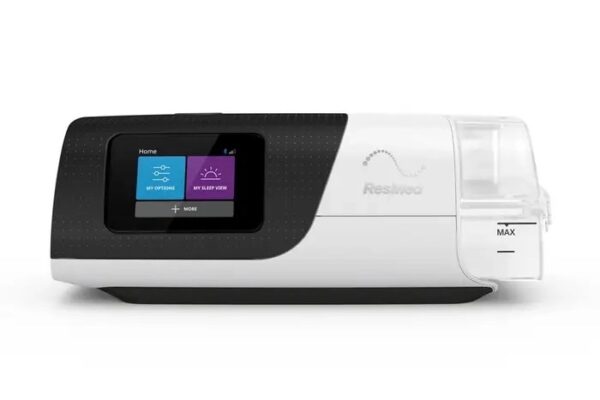Voice-Activated Technologies: Impact on User Experience
In an era where technology continues to reshape our daily lives, the restaurant industry is embracing innovative solutions to enhance customer experiences. Among these groundbreaking advancements, voice-activated technologies stand out as a game-changer.
This article explores how these AI-driven systems are transforming the way we interact with restaurants, creating more personalized, efficient, and enjoyable dining experiences.
Enhancing Customer Interaction
The integration of voice-activated technologies in restaurants marks a significant leap forward in customer service. By leveraging popular voice assistants like Amazon Alexa and Google Assistant, restaurants are opening up new channels of communication with their patrons.
Seamless Integration with Voice Assistants
Voice assistants have become an integral part of many households, with many of consumers using them for various purposes. Restaurants are tapping into this trend by integrating their services with these familiar platforms.
This integration allows customers to access restaurant information hands-free, making it convenient to check hours of operation, address, and contact details without lifting a finger.
Additionally, customers can make reservations through voice commands, streamlining the booking process and eliminating the need to navigate through websites or apps. Voice assistants also enable patrons to inquire about menu options and specials, ensuring they are well-informed about available dishes and any current promotions or events.
Natural Language Processing (NLP) Advancements
The backbone of these voice-activated systems is Natural Language Processing (NLP). Recent advancements in NLP have significantly improved the accuracy and responsiveness of these systems.
Key benefits include:
- High accuracy in understanding requests: Modern NLP can interpret complex queries and context, providing more accurate responses. For example, it can understand nuanced questions about dietary restrictions or ingredient substitutions.
- Intuitive interactions: The system can interpret colloquialisms, regional dialects, and even some slang terms.
- Multilingual support: Advanced NLP systems can understand and respond in multiple languages, catering to a diverse customer base. This is particularly valuable in areas with high tourism or multicultural communities.
- Sentiment analysis: NLP can detect the tone and emotion in a customer’s voice, allowing for more empathetic and appropriate responses.
The restaurant industry has been quick to adopt these NLP advancements, with platforms like Slang.ai pushing the boundaries of language understanding in hospitality contexts. These sophisticated AI systems can now process and respond to a wide range of restaurant-specific queries, from detailed menu questions to complex reservation requests.
By continuously learning from interactions, these NLP systems improve their understanding of context, local expressions, and even regional dining preferences, making voice-activated services in restaurants feel more natural and personalized than ever before.
Personalized Customer Experiences
Voice AI transcends basic interactions by delivering personalized experiences tailored to individual preferences and needs. By analyzing past interactions and preferences, voice AI can offer customized suggestions that significantly enhance the dining experience.
Tailored Recommendations
Voice AI can provide menu recommendations based on dietary preferences or previous choices, ensuring that each visit feels personalized. Additionally, it delivers personalized promotions, offering tailored deals that align with customer interests. It also remembers special occasions like birthdays or anniversaries and suggests appropriate dining options to make these events memorable.
Context-Aware Interactions
The context-aware capabilities of voice AI add sophistication to customer interactions. It can make time-sensitive suggestions, recommending breakfast options in the morning or dinner specials in the evening. Weather-based recommendations further enhance the experience by suggesting hot beverages on cold days or refreshing drinks during summer.
Moreover, voice AI can provide event-aware interactions, offering relevant information during local events or holidays, and ensuring that customers always receive timely and pertinent suggestions.
Operational Efficiency and Staff Support
Voice-activated technologies streamline restaurant operations by handling routine tasks and supporting staff. Automated responses to FAQs, reservation management, and information about specials and events reduce the workload, allowing staff to focus on enhancing customer service.
Reducing Staff Workload
Voice AI systems handle a variety of routine tasks, freeing up staff to concentrate on more complex and personalized aspects of customer service. Key areas where voice AI reduces workload include:
- Answering FAQs: Automated systems can provide instant responses to common questions about restaurant hours, location, menu items, and more. This reduces the need for staff to repeatedly answer the same questions, saving time and effort.
- Managing Reservations: Customers can make, modify, or cancel reservations through voice commands, streamlining the booking process. This reduces the burden on staff, who no longer need to handle these tasks manually.
- Providing Information: Voice AI can offer detailed information about specials, events, or promotions, ensuring customers are well-informed without requiring staff intervention.
Streamlining Operations
Voice commands simplify various operational tasks, enhancing efficiency and effectiveness. Key areas where voice AI streamlines operations include:
- Inventory Management: Staff can use voice commands to check stock levels, and supplies, and track inventory in real-time. This ensures that inventory management is accurate and efficient, reducing the risk of shortages or overstocking.
- Staff Scheduling: Voice-activated systems can assist in managing shift schedules, making it easier to organize and adjust staff rosters. This helps ensure optimal staffing levels and reduces scheduling conflicts.
- Equipment Maintenance: Reporting and scheduling maintenance tasks can be managed through voice inputs, ensuring that equipment issues are promptly addressed and reducing downtime. Staff can easily report problems and schedule repairs without needing to fill out forms or contact maintenance personnel directly.
Enhancing Efficiency and Productivity
By improving efficiency and reducing manual workload, voice AI enhances the overall productivity and service quality in restaurants. Some of the specific benefits include:
- Faster Service: With routine tasks automated, staff can serve customers more quickly and efficiently, reducing wait times and improving the dining experience.
- Improved Accuracy: Automated systems reduce the risk of human error in tasks such as reservation management and inventory tracking, ensuring more accurate and reliable operations.
- Increased Focus on Customer Service: With less time spent on routine tasks, staff can focus on providing personalized and attentive service to customers, enhancing overall satisfaction and loyalty.
Accessibility and Convenience
Voice-activated technologies are making restaurant services more accessible and convenient for all customers.
24/7 Availability
With voice AI, restaurants can offer round-the-clock service:
- Always-on information: Customers can access details about the restaurant at any time, including during holidays or off-hours.
- After-hours assistance: Providing support even when the physical location is closed, such as taking reservations or answering questions about future events.
- Instant responses: No wait times for basic inquiries, reducing customer frustration and improving overall satisfaction.
- Emergency updates: Ability to provide real-time information about unexpected closures, changes in hours, or other urgent matters.
Hands-Free Interaction
The convenience of hands-free interaction is particularly valuable in today’s fast-paced world:
- Multitasking: Customers can interact with the restaurant while doing other activities, such as driving, cooking, or working.
- Accessibility: Beneficial for customers with mobility issues or disabilities, providing equal access to restaurant services.
- Hygiene: Reduces the need for physical contact with menus or devices, an important consideration in post-pandemic dining.
- Ease of use: Simplifies the process for those who may struggle with technology or have visual impairments.
Enhancing Customer Trust and Loyalty
Voice-activated technologies strengthen customer relationships by providing reliable and consistent information, which helps build trust. Accurate details, uniform service experiences, and transparent communication about services and policies ensure customers feel well-informed and valued.
Additionally, personalized experiences driven by voice AI boost customer satisfaction and loyalty. These technologies make customers feel appreciated and understood by remembering individual preferences, offering seamless interactions, and proactively engaging with personalized promotions and updates. This fosters a deeper connection with the restaurant, encouraging repeat visits and long-term loyalty.
FAQs
How secure is the use of voice-activated systems in restaurants?
Modern voice-activated systems incorporate advanced security measures to protect customer data and ensure privacy. These systems are designed to comply with industry standards and regulations to maintain the security and confidentiality of interactions.
Can voice-activated technologies accommodate customers with disabilities?
Yes, voice-activated technologies can significantly improve accessibility for customers with disabilities by offering hands-free interaction and providing information in an auditory format, making restaurant services more inclusive.
How do voice-activated systems handle different accents or languages?
Advanced voice-activated systems use sophisticated Natural Language Processing (NLP) that can understand various accents and support multiple languages, making them versatile for diverse customer bases.
Conclusion
Voice-activated technologies are revolutionizing the restaurant industry, offering unprecedented levels of personalization, efficiency, and convenience. By enhancing customer interactions, streamlining operations, and fostering loyalty, these AI-driven solutions are setting new standards for the dining experience. As the technology continues to evolve, we can expect even more innovative applications that will further transform how we engage with restaurants.
Keep an eye for more news & updates on Nextweblog.com!






